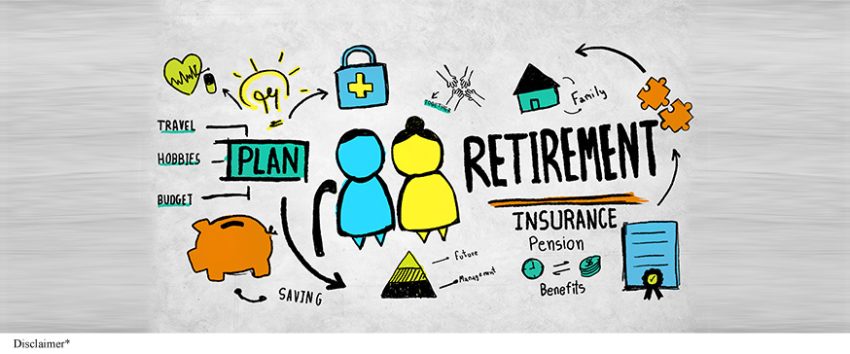Planning for retirement is a universal priority, but in Singapore, the combination of a high cost of living, longer life expectancy, and shifting economic landscapes makes it especially important. For Singaporeans, building a sustainable retirement portfolio isn’t just about setting aside money; it’s about investing wisely to grow wealth over the long term. One way to achieve this is through Exchange-Traded Funds (ETFs), which can offer a diversified, cost-effective, and flexible option for retirement savings.
Why ETFs are Ideal for Retirement Portfolios
ETFs offer unique advantages that align well with the goals of retirement planning. Here’s why they’re a strong fit:
Diversification and Reduced Risk
One of the primary advantages of ETFs is their ability to offer broad exposure to a wide range of assets, from stocks and bonds to commodities. This diversification helps lower the risk of holding single securities by spreading investments across sectors, countries, and asset types. For retirement portfolios, diversification means protection against market volatility—a crucial factor for anyone planning to draw down on investments later in life.
Cost-Efficiency
ETFs generally have lower expense ratios than mutual funds, which can significantly affect returns over time. Lower management fees translate to higher returns on investment, making ETFs a cost-effective choice for long-term investors focused on retirement. This advantage is especially relevant in Singapore, where the cost of living is high and preserving capital is critical.
Liquidity and Accessibility
ETFs are traded on exchanges, meaning they can be bought and sold like stocks during market hours. This accessibility allows retirees (or those nearing retirement) the flexibility to adjust their portfolios based on changing financial goals. With easy access to local and international ETFs, investors can conveniently explore and look online for ETFs that meet their individual needs and retirement timelines.
Key Considerations for Retirement Planning in Singapore
With Singaporeans living longer, typically into their 80s, planning for a retirement that could last 20-30 years is essential. Starting early and focusing on sustainable investment growth becomes even more important, as a longer life expectancy calls for a larger retirement fund.
The Central Provident Fund (CPF) is a mandatory savings scheme for Singaporean workers, which helps cover retirement, healthcare, and housing needs. While CPF provides a foundation, Supplementary Retirement Scheme (SRS) contributions are a great way to grow a retirement fund with the flexibility of investing in ETFs, which can supplement CPF payouts in later years.
Singapore offers tax benefits for SRS contributions, and investment gains within SRS accounts are tax-deferred until retirement, providing significant tax savings. When ETFs are held in SRS accounts, the investor’s portfolio benefits from tax-deferred growth, enhancing compounding and the potential for sustainable growth.
Types of ETFs to Consider for a Sustainable Retirement Portfolio
Choosing the right mix of ETFs is essential for constructing a resilient portfolio. Here are the main types to consider:
Equity ETFs
Equity ETFs provide exposure to stock markets, offering growth potential. In Singapore, popular choices include the Straits Times Index (STI) ETF, which focuses on local stocks, as well as global equity ETFs that allow for exposure to developed markets like the US or Europe. Equity ETFs can add growth potential to a portfolio, which is especially useful for younger investors with a longer retirement horizon.
Bond ETFs
Bond ETFs, including those focused on Singapore government bonds or high-grade corporate bonds, provide stability and a regular income stream. Bonds typically act as a counterbalance to equities, providing lower but steadier returns. Including bond ETFs in a retirement portfolio is particularly relevant for those approaching or already in retirement, as it reduces the impact of market volatility.
Dividend ETFs
Dividend-focused ETFs invest in companies with a strong track record of paying dividends, making them an attractive option for retirees who want a steady income. These ETFs can provide a reliable stream of cash flow, which is beneficial in the drawdown phase of retirement planning.
Building and Managing a Sustainable ETF Portfolio for Retirement
Creating a retirement portfolio with ETFs requires a structured approach that balances growth with risk management. Here’s a step-by-step guide:
Setting Clear Retirement Goals
The foundation of any retirement portfolio is clarity on goals. Calculate estimated retirement expenses, taking into account inflation and lifestyle preferences. With these goals in mind, investors can choose a risk level that fits their needs, whether conservative or moderate.
Asset Allocation Strategies
Asset allocation refers to the distribution of investments across asset classes like stocks and bonds. Conventional approaches like the 60/40 or 70/30 split between equities and bonds can serve as guidelines. Younger investors may lean towards equity-heavy allocations, while those closer to retirement may prefer a bond-heavy allocation. Singaporean investors might adjust these ratios to incorporate regional market strengths or preferences.
Rebalancing the Portfolio
As markets fluctuate, asset allocation may deviate from the original target, potentially increasing portfolio risk. Periodic …
